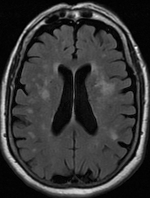
Photo from wikipedia
Extracting retinal vessels accurately is very important for diagnosing some diseases such as diabetes retinopathy, hypertension, and cardiovascular. Clinically, experienced ophthalmologists diagnose these diseases through segmenting retinal vessels manually and… Click to show full abstract
Extracting retinal vessels accurately is very important for diagnosing some diseases such as diabetes retinopathy, hypertension, and cardiovascular. Clinically, experienced ophthalmologists diagnose these diseases through segmenting retinal vessels manually and analysing its structural feature, such as tortuosity and diameter. However, manual segmentation of retinal vessels is a time-consuming and laborious task with strong subjectivity. The automatic segmentation technology of retinal vessels can not only reduce the burden of ophthalmologists but also effectively solve the problem that is a lack of experienced ophthalmologists in remote areas. Therefore, the automatic segmentation technology of retinal vessels is of great significance for clinical auxiliary diagnosis and treatment of ophthalmic diseases. A method using SegNet is proposed in this paper to improve the accuracy of the retinal vessel segmentation. The performance of the retinal vessel segmentation model with SegNet is evaluated on the three public datasets (DRIVE, STARE, and HRF) and achieved accuracy of 0.9518, 0.9683, and 0.9653, sensitivity of 0.7580, 0.7747, and 0.7070, specificity of 0.9804, 0.9910, and 0.9885, F1 score of 0.7992, 0.8369, and 0.7918, MCC of 0.7749, 0.8227, and 0.7643, and AUC of 0.9750, 0.9893, and 0.9740, respectively. The experimental results showed that the method proposed in this research presented better results than many classical methods studied and may be expected to have clinical application prospects.
Journal Title: Computational and Mathematical Methods in Medicine
Year Published: 2022
Link to full text (if available)
Share on Social Media: Sign Up to like & get
recommendations!